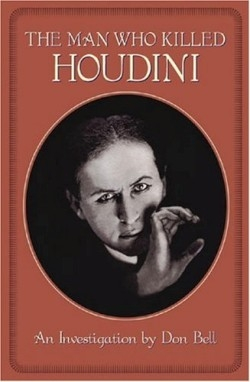
The Man Who Killed Houdini
An Investigation
Harry Houdini declared that false mediums had plans to do him in, that they would go to any ends to stop him. “When I die,” Houdini was often quoted as saying, “the fraudulent mediums will declare the day a national holiday.”
Houdini was one of the most famous men of his era and is still a household name nearly eighty years after his death. Making his fortune as a master illusionist and escape artist, Houdini later turned his immense talents to debunking what he considered the great scourge of his day—sham spiritualists, who fleeced countless bereaved people with parlor tricks and phony “messages from beyond.” In Montreal, during a sold-out tour featuring the illusionist’s death-defying escapes and lectures on nefarious spirit mediums, a college student walked into Houdini’s dressing room and landed several crushing punches to the unprepared man’s abdomen. Houdini died of a ruptured appendix nine days later. The man who threw the punches, J. Gordon Whitehead, seemed to vanish into thin air, like one of his victim’s illusions.
Virtually nothing was known about Whitehead or why he struck Houdini. The author, a Montreal writer and winner of the National Magazine Award and the Stephen Leacock Medal for Humor, spent twenty years investigating the mysterious incident, exploring such questions as whether Whitehead disappeared because he felt guilty for a fateful accident, or whether he sought anonymity because he intended to murder Houdini. Bell examines the possibility that the irate spiritualists, some of whom made wild “predictions” about Houdini’s death, were somehow involved.
Though Whitehead was long dead when Bell started his investigation, the author tracked down the two former college students who witnessed the incident; they were able to shed some light, but had not seen the assailant since that day. Doggedly following leads that took him across Canada and abroad, the author located a surviving brother and former neighbors and acquaintances of the strange fellow who kept a very low profile until his death in 1954. In fact, Bell was only able to find one photograph of Whitehead, taken around 1950.
The portrait of Whitehead that emerges from the author’s fascinating account of his exhaustive and engrossing investigation is complex and chilling. The vigorous, powerful youth who slugged Houdini slowly devolved into a lugubrious, sickly loner who shunned society and his past. It was as though the guilt from that fateful day slowly eroded his body and soul. Ultimately, Bell concludes, the man who killed Houdini took his reason for throwing those punches to his grave.
Many biographies and books have been written about Houdini. Bell completed this compelling volume before his own death in 2003, and it is now the authoritative work on what became of Houdini’s killer.
Reviewed by
Alan J. Couture
Disclosure: This article is not an endorsement, but a review. The publisher of this book provided free copies of the book to have their book reviewed by a professional reviewer. No fee was paid by the publisher for this review. Foreword Reviews only recommends books that we love. Foreword Magazine, Inc. is disclosing this in accordance with the Federal Trade Commission’s 16 CFR, Part 255.
